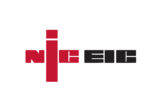
What is neutral current diversion (NCD) and where is it most likely to occur? This article, delivered collectively by some of the industry’s leading authorities, aims to provide some of the answers.
Neutral current diversion (NCD) is a term used to describe ‘stray’ neutral currents that take an alternative or diverted route back to the earth connection of the supply transformer. Metallic service pipes entering a building, such as continuous metallic water or gas pipes, can provide such an alternative route.
Normally, load current flowing in a circuit will return via the circuit neutral conductor to the supply transformer via the neutral conductor of the network supply cable.
However, NCD can occur under load conditions due to a parallel path that may exist in the network or if a break in the neutral conductor of the supply cable occurs.
Where NCD occurs, the current flowing may consist of all or part of the neutral current that would normally return in the network supply cable.
Where to find it
NCD may be a particular issue in multi-occupancy type buildings where metallic service pipes are common to all properties. The return path that NCD could take in such a property could potentially have multiple parallel routes. NCD is most likely to occur in an earthing system where the neutral and earth functions are combined, such as where a TN-C-S earthing system has been provided by the DNO.
It can also exist where the neutral and earth functions are considered to be separate, as in a TN-S earthing system.
NCD can also occur where a main protective bonding conductor connection is made between the main earthing terminal and extraneous- conductive-parts that may exist in the consumer’s installation.
TN-C-S earthing systems, also known as PME, were first introduced in the early 1970s and are known as Combined Neutral and Earth (CNE) systems by DNO network operators. Prior to this, Separate Neutral and Earth (SNE) DNO networks were universal. However, over time, many legacy SNE networks have been modified to PME or made PME-enabled.
Take care in older properties
Older properties are also more likely to have metallic water services and therefore provide a more supportive environment for NCD. Protective equipotential bonding in these properties may be specified to an older version of BS 7671, therefore may not have been upgraded as BS 7671 has evolved.
Consequently, the smaller cross- sectional area (CSA) of protective bonding conductors in older properties may not be suitably sized for PME conditions, and therefore not rated to withstand the levels of NCD that can occur in a PME network.
Some relatively low NCD is a ‘normal’ condition that has been on networks for several decades. It’s only really of concern when a broken neutral or high impedance neutral fault occurs on the PEN conductor on PME networks.
Your help is required
The IET, ECA, Electrical Safety First, NAPIT, NICEIC and SELECT are working together to investigate the prevalence of Neutral Current Diversion (NCD) incidents across the UK.
As an electrical installer, you’re in the perfect position to provide vital information. If you encounter any incidents of NCD, please complete the survey on the IET website, which will take less than five minutes.
Access the NCD survey on the IET website here
Checking for Neutral Current Diversion
Before working on an existing electrical installation, it is recommended that the following safety check is carried out to determine the possibility of neutral current diversion (NCD):
Find more industry technical articles here











